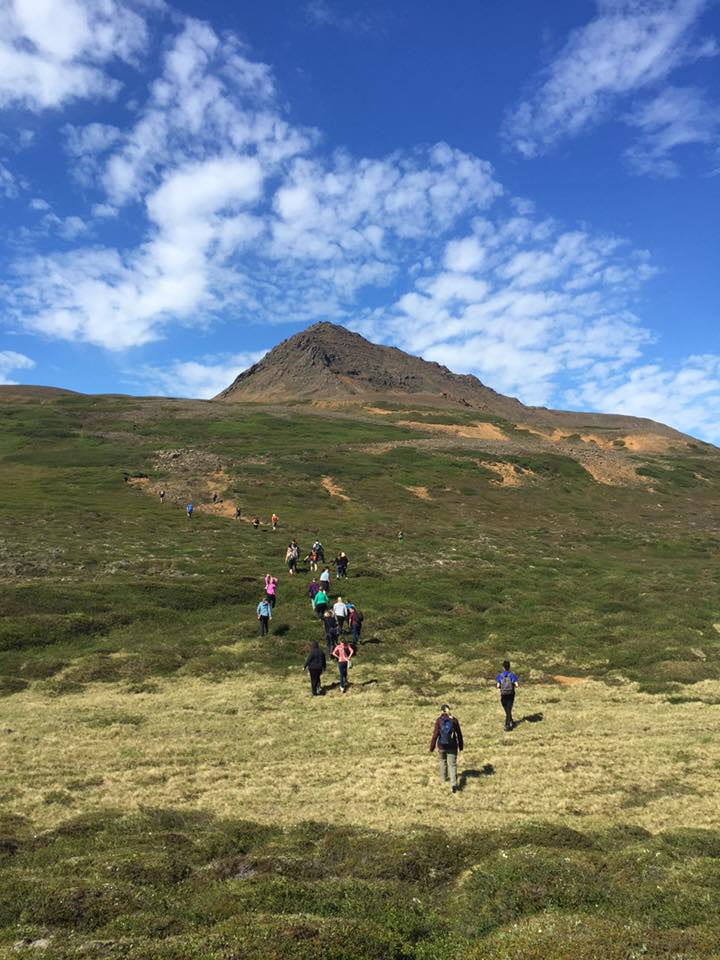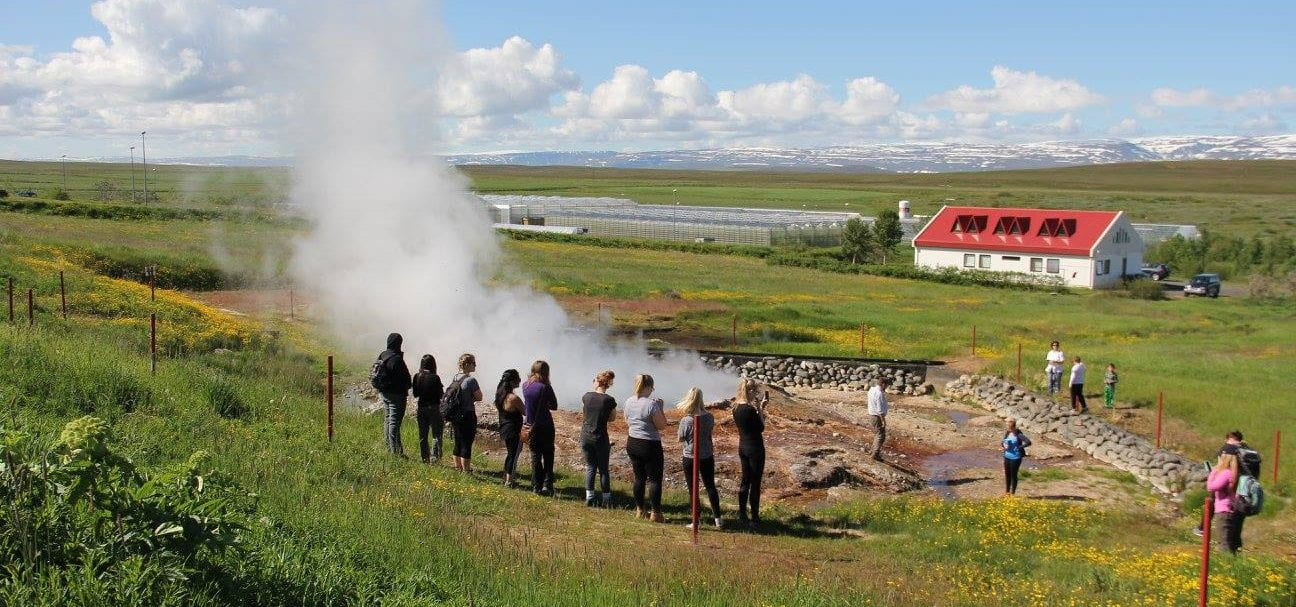As a non-traditional student with a background in the humanities (and as someone who had never taken a course specifically in microbiology), I was excited and a tad bit nervous to join fellow biologists for a two week intensive arctic microbial ecology field and lab course in Iceland.
Upon landing in Iceland, we learned that our English counterparts had a ten hour delay. We were either going to succumb to the boredom of the endless wait ahead of us, or work together and adapt to the situation. We eventually made our way to Reykjavik (this was an added bonus, as there were no specific plans to tour there) where we met the group from Colombia. We shopped around, went on a puffin tour at sea, and ventured to the top of the church for a fantastic view. When our English counterparts finally arrived, we began on our whirlwind of exploration beginning with the drive to the far north to meet the Icelandic team. Raufarhöfn, a fishing community home to around 200 people, was our field base for the next few days. Time seemed to blur; with busy days and a constant lack of darkness, a week seemed to pass in the blink of an eye. Amongst pristine scenery—waterfalls (one being the strongest in Europe), snowcapped mountains, deserts that looked Martian, fields of purple Lupine stretching out to oceans, and geothermal water whiter and bluer than the clearest sky— we collected samples for characterization in the lab at the University of Akureyri. Iceland embodies dreams and myth —which we not only could see but also had the pleasure of learning about through hearing myths of Thor while driving between sampling sites. My partner from the University of Reading and I, sampled lichens from rocks located on a beach around 1 kilometer from the most northern tip of mainland Iceland—basically a (giant’s) stone’s throw away from the arctic circle. Every night, we were treated to a beautiful homemade meal at the local school that hosted us. On our time off, we ventured around town, some of us even found our way (whilst being attacked by the local sea birds) to the Arctic Stone Henge.

When we arrived in Akureyri, it was straight to lectures and work in the lab. We were privileged to be able to listen to lectures concerning such topics as the geological formation of Iceland, bacterial movement, extremophiles, viruses, lichen symbiosis, astrobiology, science communication and the intersection between art and science (we were joined by an artist who is inspired by the microbial world). Every student involved was open to, and enthusiastic about, making new connections. We filled the evenings chatting (and singing) together and supporting each other through the course work, grocery shopping and cooking together, and general exploring of the city. We learned a great deal about collaborating with people, especially with people from other universities and countries who may do things differently, and who may not be native English speakers. From day one, we were learning how to work together and how to adjust to unexpected events. This was incredibly beneficial experience as science cannot be done unless people can work together as a team through planned and unplanned situations.
Being given the opportunity to work with such dedicated and enthusiastic students and professors, in an environment that supported interdisciplinary approaches to the sciences, was inspiring on a personal and academic level. This was truly a life changing experience for me.

